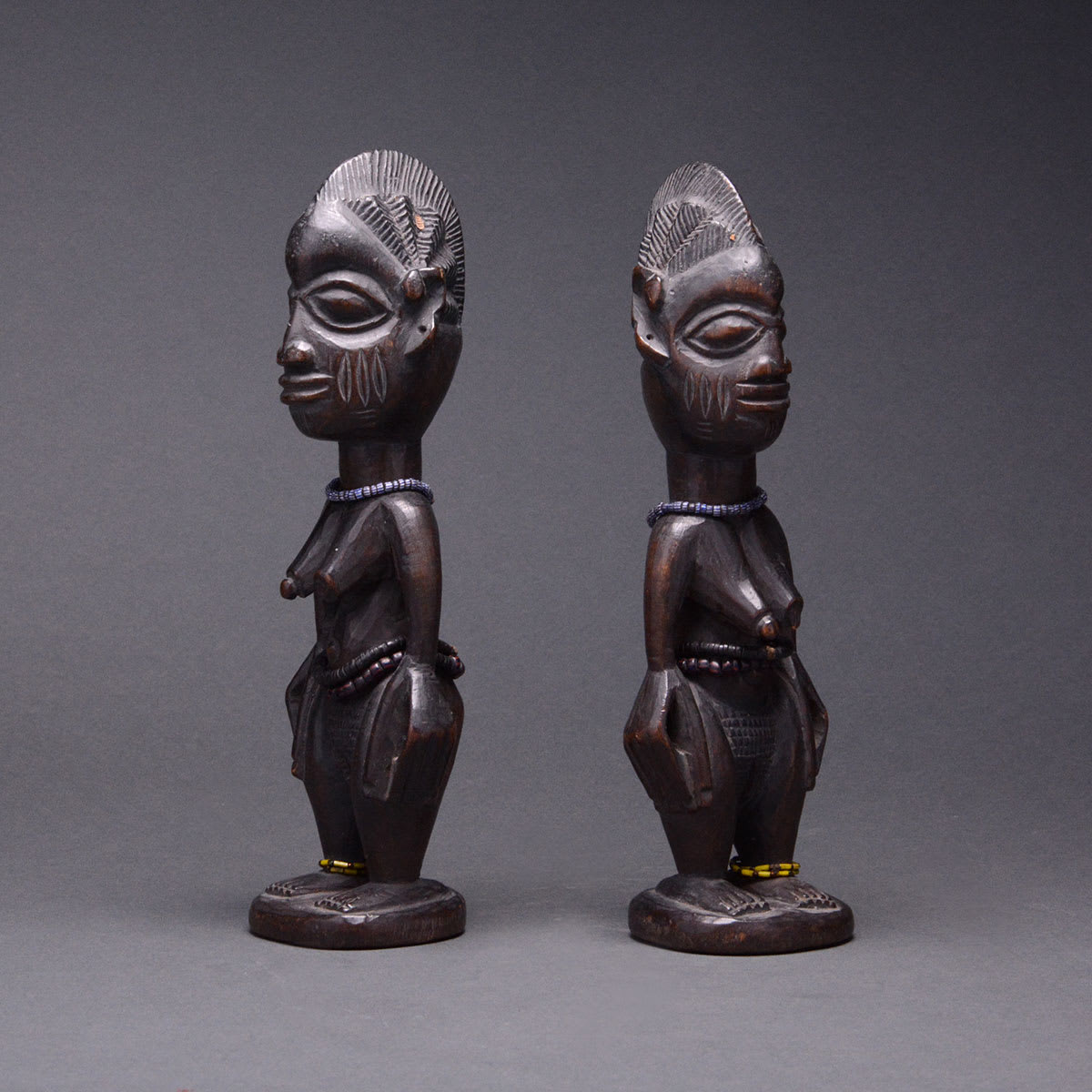Pair of Yoruba Wooden Ibeji Doll with Cowrie Shell Cloak, 20th Century CE
Wood and Beads
26.4 x 8.9 cm
10 3/8 x 3 1/2 in
10 3/8 x 3 1/2 in
PF.5731
Further images
Twinning as a biological phenomenon is exceptionally common among the Yoruba. Parents of twins greet their birth as both a blessing and a burden. Twins double everything. They are twice...
Twinning as a biological phenomenon is exceptionally common among the Yoruba. Parents of twins greet their birth as both a blessing and a burden. Twins double everything. They are twice as much trouble, but bring twice as much good fortune to those parents who give them proper care. Twins were thought to exist in three different worlds at the same time - the "Bush," the Spirit World and the world of human beings.
In order to insure direct contact with the spirit of dead twins, which were believed to play an active role in the lives of their family, a mother commissions the carving of an Ibeji after a twin has died. Twin figures are treated in much the same manner as living children. They are regularly "fed" beans and red palm oil, foods sacred to the god Ibeji, and are washed in a bath of special herbs. They are kept on a household altar, covered with a special cloth, where sacrifices of food and other items are regularly offered. The Yoruba are the only people in West Africa who carve wooden images to commemorate twins. Ibeji figures are traditionally carved with bent knees and elongated arms held to the side, and the face is given a serene effect of "coolness,” called otuto. This sculpture bears the marks of ritual scarifications along her cheeks and pubic region. Beaded jewelry has been added around her neck, waist, and right ankle. Perhaps the most interesting feature is her missing left nipple. Often when ritual objects were discarded or traded, a little piece would be broken off to disable the statue’s spiritual powers. More than a memorial or a work of art, this Ibeji statue has the ability to influence and affect out daily lives.
In order to insure direct contact with the spirit of dead twins, which were believed to play an active role in the lives of their family, a mother commissions the carving of an Ibeji after a twin has died. Twin figures are treated in much the same manner as living children. They are regularly "fed" beans and red palm oil, foods sacred to the god Ibeji, and are washed in a bath of special herbs. They are kept on a household altar, covered with a special cloth, where sacrifices of food and other items are regularly offered. The Yoruba are the only people in West Africa who carve wooden images to commemorate twins. Ibeji figures are traditionally carved with bent knees and elongated arms held to the side, and the face is given a serene effect of "coolness,” called otuto. This sculpture bears the marks of ritual scarifications along her cheeks and pubic region. Beaded jewelry has been added around her neck, waist, and right ankle. Perhaps the most interesting feature is her missing left nipple. Often when ritual objects were discarded or traded, a little piece would be broken off to disable the statue’s spiritual powers. More than a memorial or a work of art, this Ibeji statue has the ability to influence and affect out daily lives.







